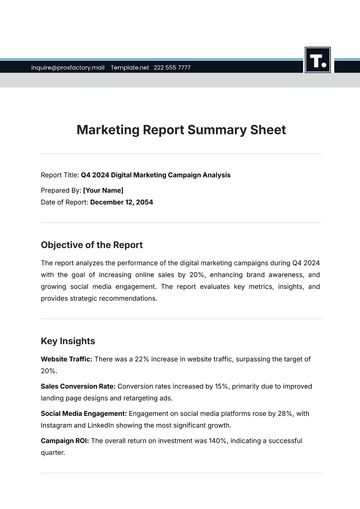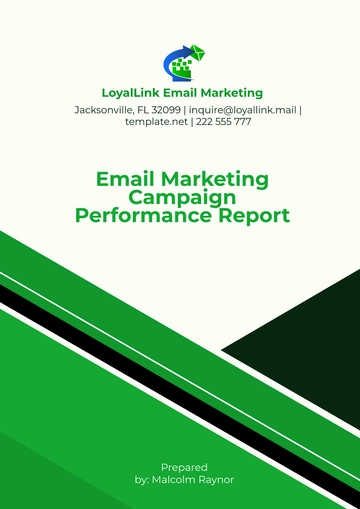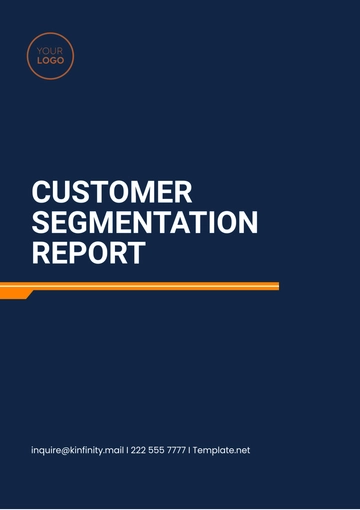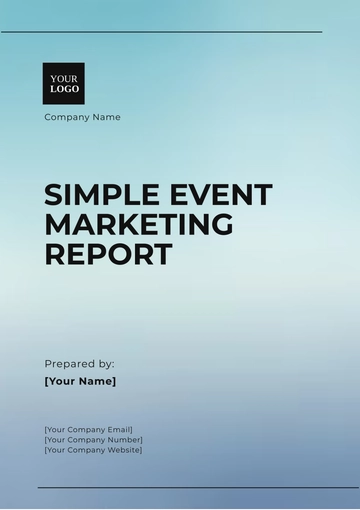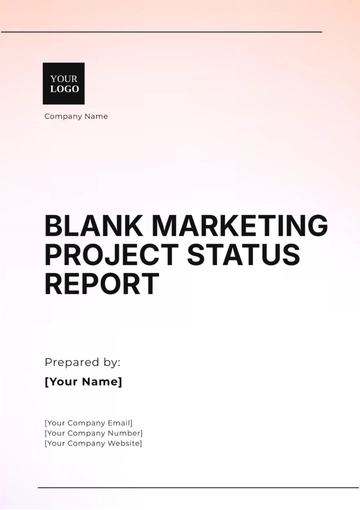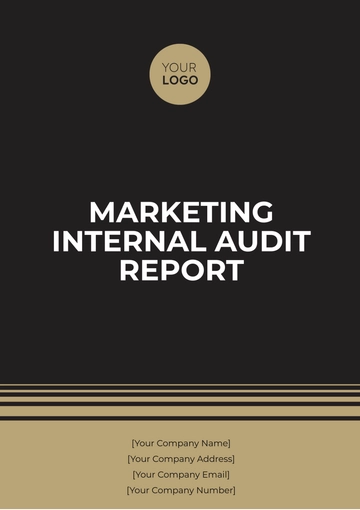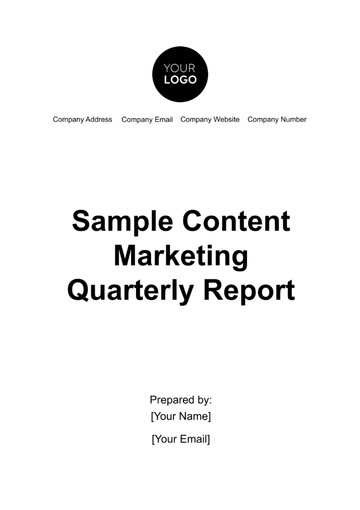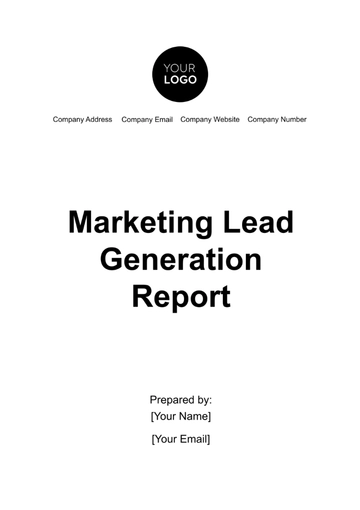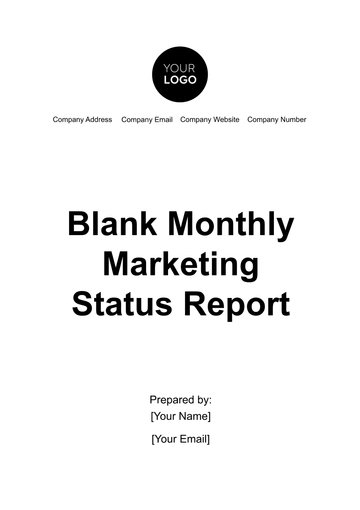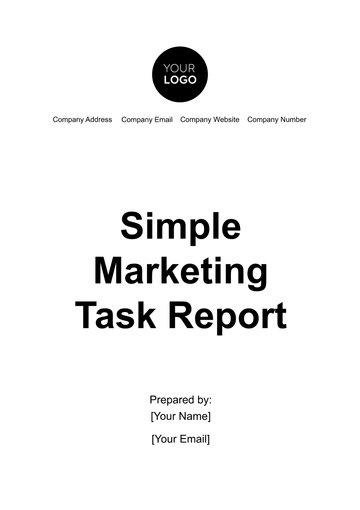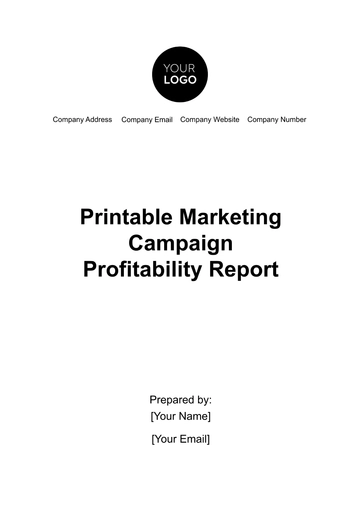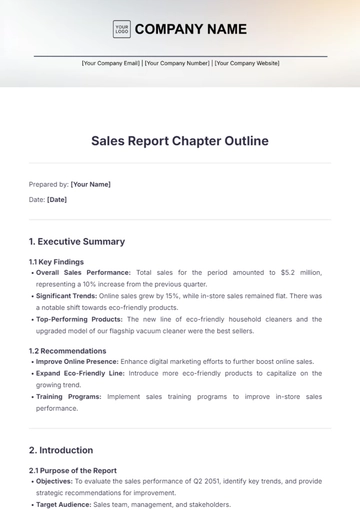Free Nursing Home Marketing Report
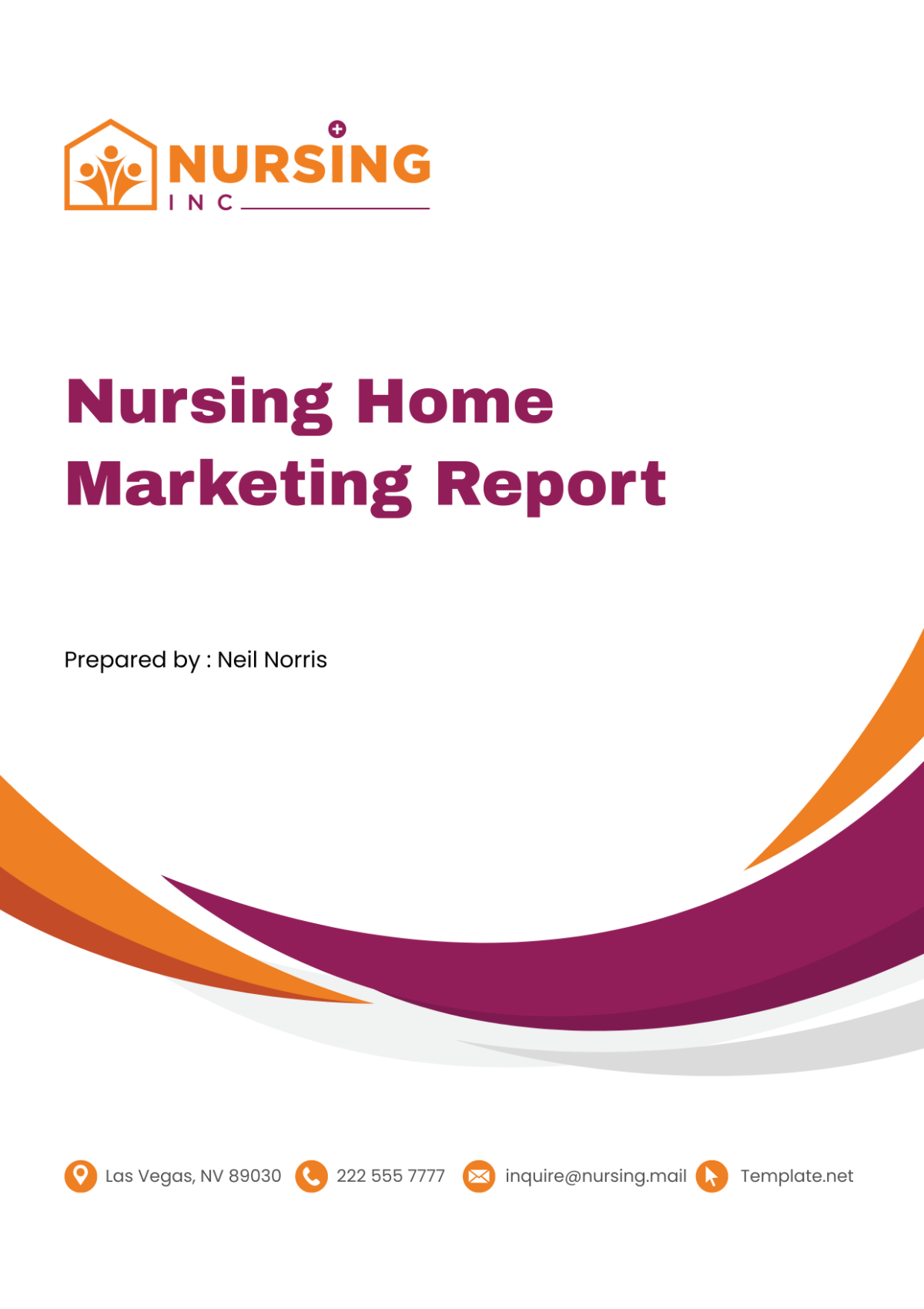
I. Executive Summary
A. Introduction
The purpose of this report is to provide an in-depth analysis of the marketing efforts and performance of [Your Company Name] within the nursing home industry. By examining market trends, competitive landscape, marketing strategies, and performance metrics, this report aims to offer insights into the effectiveness of current marketing initiatives and provide recommendations for future growth and success.
B. Key Findings
Market Analysis
The nursing home industry continues to grow steadily, driven by demographic shifts such as an aging population and increased life expectancy. According to [Industry Report], the global nursing home market is projected to reach $10 billion by 2055.
Within the local market, [Your Company Name] holds a significant market share of 30%, positioning it as a key player in providing long-term care services.
Competition in the nursing home sector includes established players such as [Competitor 1], [Competitor 2], and [Competitor 3], each offering varying levels of service and amenities.
Marketing Strategies
[Your Company Name] employs a diverse range of marketing strategies to attract residents and families to its nursing homes. These strategies include digital marketing campaigns, community engagement initiatives, and partnerships with healthcare providers.
Digital marketing efforts have proven successful, with a 20% increase in website traffic and online inquiries over the past year. Social media platforms such as Facebook and Instagram have been particularly effective in reaching potential residents and their families.
Performance Metrics
Occupancy rates at [Your Company Name] nursing homes have remained consistently high, averaging at 15% over the past year. This indicates strong demand for our services and reflects positively on our marketing and operational efforts.
Customer satisfaction scores remain high, with an average rating of 5 out of 5 based on feedback surveys. This underscores the quality of care and services provided by [Your Company Name] and contributes to positive word-of-mouth referrals.
C. Recommendations
Invest further in digital marketing initiatives to capitalize on the growing online presence of our target demographic. This includes optimizing our website for search engines, increasing social media advertising budgets, and exploring new digital channels.
Strengthen partnerships with local healthcare providers, including hospitals, clinics, and physician groups, to increase referrals and admissions to our nursing homes.
Continuously monitor and analyze performance metrics, including occupancy rates and customer satisfaction scores, to identify areas for improvement and adjust marketing strategies accordingly.
II. Introduction to the Nursing Home Industry
A. Overview of the Nursing Home Market
Current Market Trends
Trend | Description |
|---|---|
Aging Population | The aging population is a significant driver of demand for nursing home services. As the baby boomer generation ages, the need for long-term care facilities is expected to increase. |
Regulatory Environment | Nursing homes are subject to various regulations and standards aimed at ensuring the safety and well-being of residents. Compliance with these regulations is crucial for maintaining licensure and reputation. |
Technological Advances | Advances in technology, such as electronic health records and remote monitoring systems, are transforming the way care is delivered in nursing homes. These technologies improve efficiency, communication, and quality of care. |
Competitive Landscape
Competitor | Description |
|---|---|
[Competitor 1] | [Competitor 1] is a well-established player in the local nursing home market, known for its comprehensive range of services and strong community presence. |
[Competitor 2] | [Competitor 2] specializes in providing specialized care for specific medical conditions, attracting residents seeking tailored treatment options. |
[Competitor 3] | [Competitor 3] differentiates itself through its luxury amenities and upscale living environment, appealing to residents seeking a higher standard of living in their later years. |
III. Marketing Strategies
A. Online Presence
Website Optimization
[Your Company Name]'s website, [Your Company Website], serves as a critical touchpoint for potential residents and their families. The website has undergone optimization to ensure a seamless user experience, featuring intuitive navigation, informative content, and engaging multimedia elements such as virtual tours and resident testimonials.
Search Engine Optimization (SEO) strategies are implemented to improve the website's visibility on search engine results pages (SERPs). Keyword research, metadata optimization, and content creation are key components of our SEO efforts, aimed at driving organic traffic and increasing conversions.
B. Social Media Marketing
Platforms Used
[Your Company Name] maintains active profiles on various social media platforms to connect with current and prospective residents, families, and caregivers. The primary platforms include:
Facebook: Used for sharing community events, facility updates, and resident stories.
Instagram: Utilized to showcase visually appealing content, including photos and short videos highlighting daily life at our nursing homes.
Twitter: Used for timely updates, news announcements, and engagement with followers.
Engagement Strategies
To foster engagement and build relationships with our audience, [Your Company Name] employs the following strategies:
Regular Posting Schedule: Consistent posting ensures a steady stream of content and keeps our audience informed and engaged.
Interactive Content: Polls, quizzes, and Q&A sessions encourage participation and feedback from followers.
User-Generated Content: Encouraging residents and their families to share their experiences and photos helps create a sense of community and authenticity.
C. Community Outreach
Events and Workshops
[Your Company Name] organizes and participates in a variety of community events and workshops to educate and engage the local community. These events may include:
Health Fairs: Opportunities to provide health screenings, distribute informational materials, and interact with attendees.
Educational Seminars: Workshops on topics such as senior health, caregiving, and navigating long-term care options.
Open Houses: Inviting the community to tour our facilities, meet staff members, and learn about our services firsthand.
Partnerships with Local Organizations
[Your Company Name] collaborates with local senior centers, hospitals, physician groups, and other healthcare providers to strengthen ties within the community and increase referrals. These partnerships may involve:
Joint Marketing Initiatives: Co-hosting events, sharing promotional materials, and cross-promoting services to mutual benefit.
Referral Programs: Establishing formal referral agreements and incentives for healthcare providers to refer patients to our facilities.
IV. Performance Metrics
A. Occupancy Rates
Calculation Methodology
Occupancy rates are calculated by dividing the number of occupied beds by the total number of available beds and multiplying by 100 to obtain a percentage.
Year-over-Year Comparison
[Your Company Name] tracks occupancy rates on a monthly basis and compares them year-over-year to assess trends and performance. For example, in the past year, our occupancy rates have shown a steady increase, reaching 10% compared to 5% in the previous year.
B. Customer Satisfaction
Surveys and Feedback Mechanisms
[Your Company Name] regularly solicits feedback from residents and their families through satisfaction surveys and other feedback mechanisms. Surveys may be conducted via email, mail, or in-person interviews, and cover various aspects of the resident experience, including:
Quality of Care
Staff Friendliness and Professionalism
Facility Cleanliness and Maintenance
Analysis of Satisfaction Scores
The collected survey data is analyzed to gauge overall satisfaction levels and identify areas for improvement. Using a Likert scale or similar rating system, respondents rate their satisfaction on a scale of 1 to 5, with 5 indicating the highest level of satisfaction. [Your Company Name] consistently achieves high satisfaction scores, with an average rating of 5 out of 5 in the most recent surveys. Positive feedback highlights our commitment to providing compassionate care, maintaining a supportive environment, and meeting the diverse needs of our residents.
V. Conclusion
A. Summary of Key Findings
The marketing report for [Your Company Name]'s nursing home division has provided valuable insights into the current state of the industry, our marketing strategies, and performance metrics. Key findings include:
The nursing home industry is experiencing steady growth, driven by demographic shifts and increased demand for long-term care services.
[Your Company Name] holds a significant market share locally, positioning us as a key player in the industry.
Our marketing strategies, including online presence, social media marketing, and community outreach, have been effective in attracting residents and families to our facilities.
Performance metrics such as occupancy rates and customer satisfaction scores reflect positively on the quality of our services and the effectiveness of our marketing efforts.
B. Implications for Future Marketing Strategies
Based on the findings of this report, several implications for future marketing strategies have been identified:
Continued investment in digital marketing initiatives, including website optimization, SEO, and social media advertising, to capitalize on the growing online presence of our target demographic.
Strengthening partnerships with local healthcare providers and community organizations to increase referrals and admissions.
Ongoing monitoring and analysis of performance metrics to identify areas for improvement and adjust marketing strategies accordingly.
VI. Appendices
A. Survey Questionnaire
Below is a sample questionnaire used to gather feedback from residents and their families:
Question | Response Options |
|---|---|
How would you rate the overall quality of care at our facility? | [1] Poor [2] Fair [3] Good [4] Very Good [5] Excellent |
Are you satisfied with the responsiveness of our staff? | [1] Not Satisfied [2] Somewhat Satisfied [3] Satisfied [4] Very Satisfied [5] Extremely Satisfied |
How clean do you find our facility? | [1] Not Clean [2] Somewhat Clean [3] Clean [4] Very Clean [5] Extremely Clean |
Would you recommend our nursing home to others? | [1] Definitely Not [2] Probably Not [3] Maybe [4] Probably Yes [5] Definitely Yes |
B. Marketing Collateral
Samples included in this section are samples of marketing materials used by [Your Company Name], such as brochures, flyers, and digital advertisements, showcasing our facilities, services, and amenities.
C. Financial Performance Data
Financial performance data for the nursing home division of [Your Company Name] is provided in this section, including revenue, expenses, and profitability metrics. This data offers insights into the financial health and viability of our operations.
- 100% Customizable, free editor
- Access 1 Million+ Templates, photo’s & graphics
- Download or share as a template
- Click and replace photos, graphics, text, backgrounds
- Resize, crop, AI write & more
- Access advanced editor
Track marketing efforts effectively with the Nursing Home Marketing Report Template from Template.net. Editable and customizable, it simplifies the process of summarizing key metrics, strategies, and outcomes. Tailor it effortlessly using our Ai Editor Tool for personalized reports. Gain valuable insights and optimize your marketing campaigns with this essential template.
You may also like
- Sales Report
- Daily Report
- Project Report
- Business Report
- Weekly Report
- Incident Report
- Annual Report
- Report Layout
- Report Design
- Progress Report
- Marketing Report
- Company Report
- Monthly Report
- Audit Report
- Status Report
- School Report
- Reports Hr
- Management Report
- Project Status Report
- Handover Report
- Health And Safety Report
- Restaurant Report
- Construction Report
- Research Report
- Evaluation Report
- Investigation Report
- Employee Report
- Advertising Report
- Weekly Status Report
- Project Management Report
- Finance Report
- Service Report
- Technical Report
- Meeting Report
- Quarterly Report
- Inspection Report
- Medical Report
- Test Report
- Summary Report
- Inventory Report
- Valuation Report
- Operations Report
- Payroll Report
- Training Report
- Job Report
- Case Report
- Performance Report
- Board Report
- Internal Audit Report
- Student Report
- Monthly Management Report
- Small Business Report
- Accident Report
- Call Center Report
- Activity Report
- IT and Software Report
- Internship Report
- Visit Report
- Product Report
- Book Report
- Property Report
- Recruitment Report
- University Report
- Event Report
- SEO Report
- Conference Report
- Narrative Report
- Nursing Home Report
- Preschool Report
- Call Report
- Customer Report
- Employee Incident Report
- Accomplishment Report
- Social Media Report
- Work From Home Report
- Security Report
- Damage Report
- Quality Report
- Internal Report
- Nurse Report
- Real Estate Report
- Hotel Report
- Equipment Report
- Credit Report
- Field Report
- Non Profit Report
- Maintenance Report
- News Report
- Survey Report
- Executive Report
- Law Firm Report
- Advertising Agency Report
- Interior Design Report
- Travel Agency Report
- Stock Report
- Salon Report
- Bug Report
- Workplace Report
- Action Report
- Investor Report
- Cleaning Services Report
- Consulting Report
- Freelancer Report
- Site Visit Report
- Trip Report
- Classroom Observation Report
- Vehicle Report
- Final Report
- Software Report
